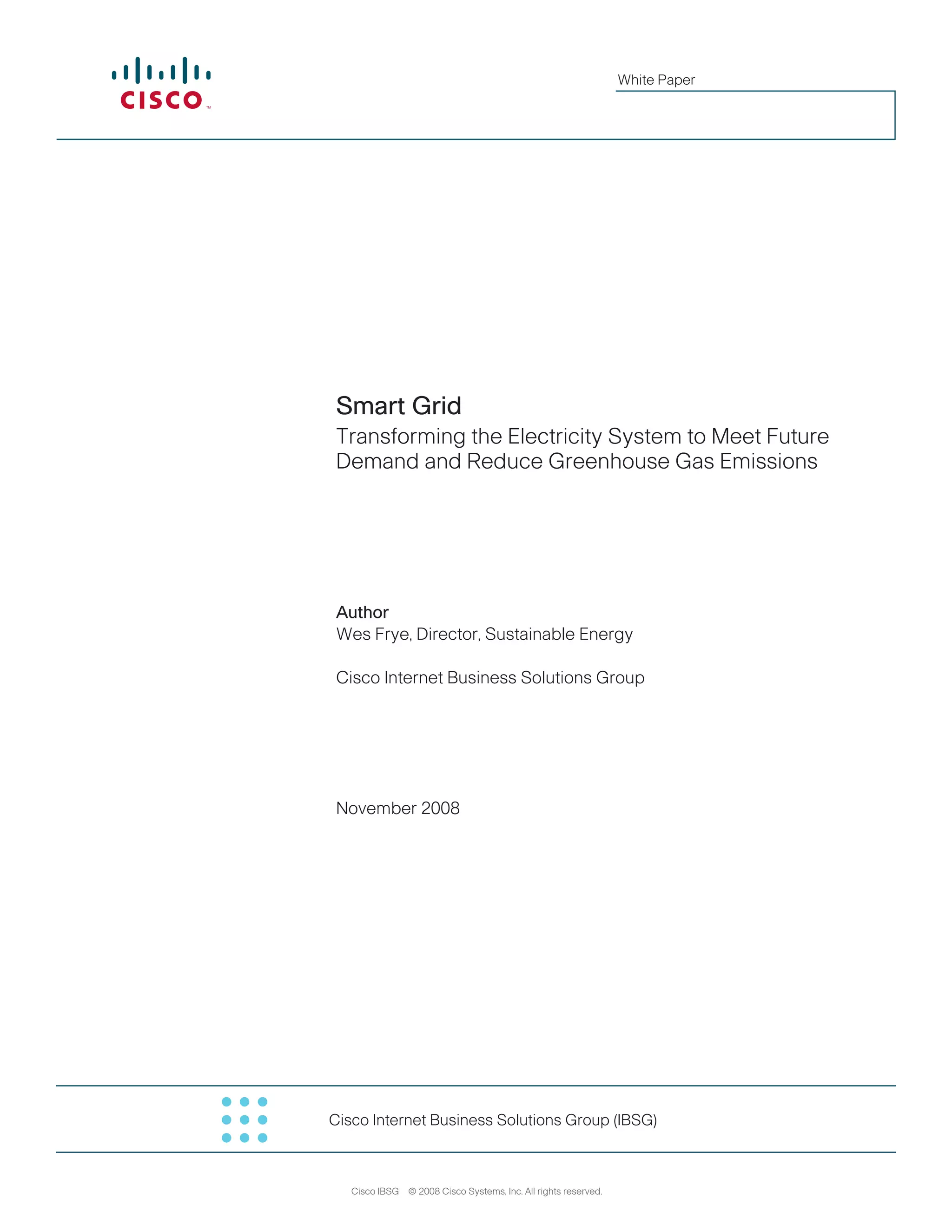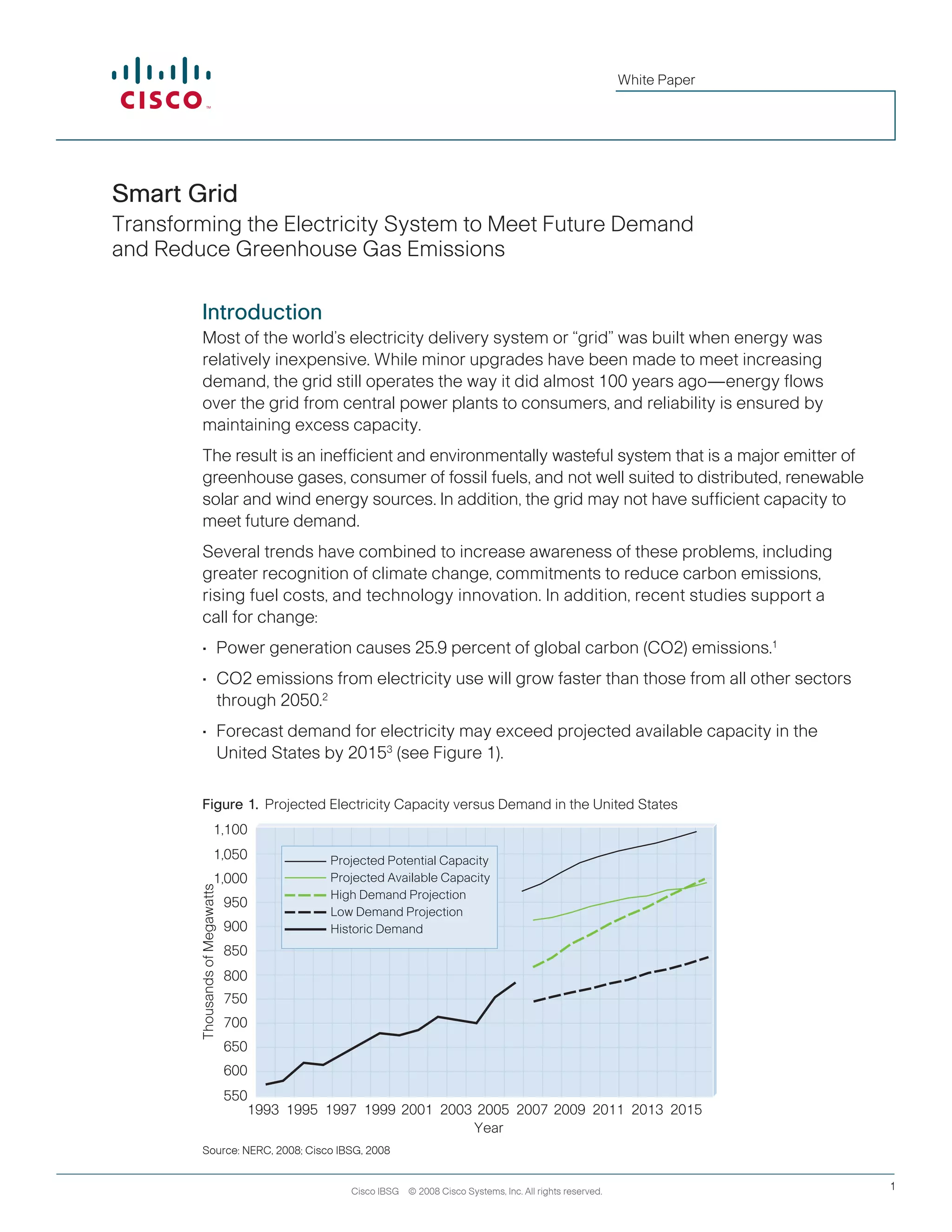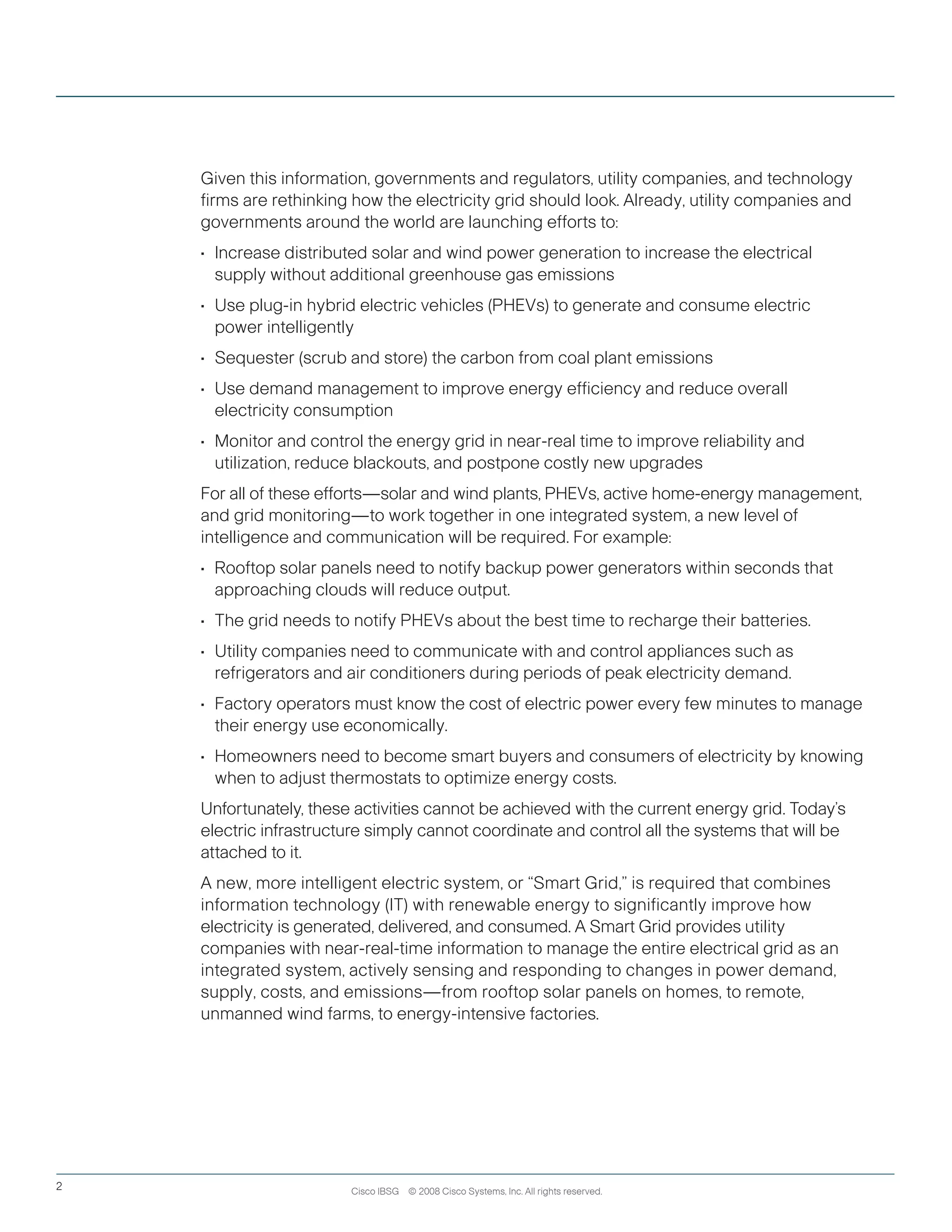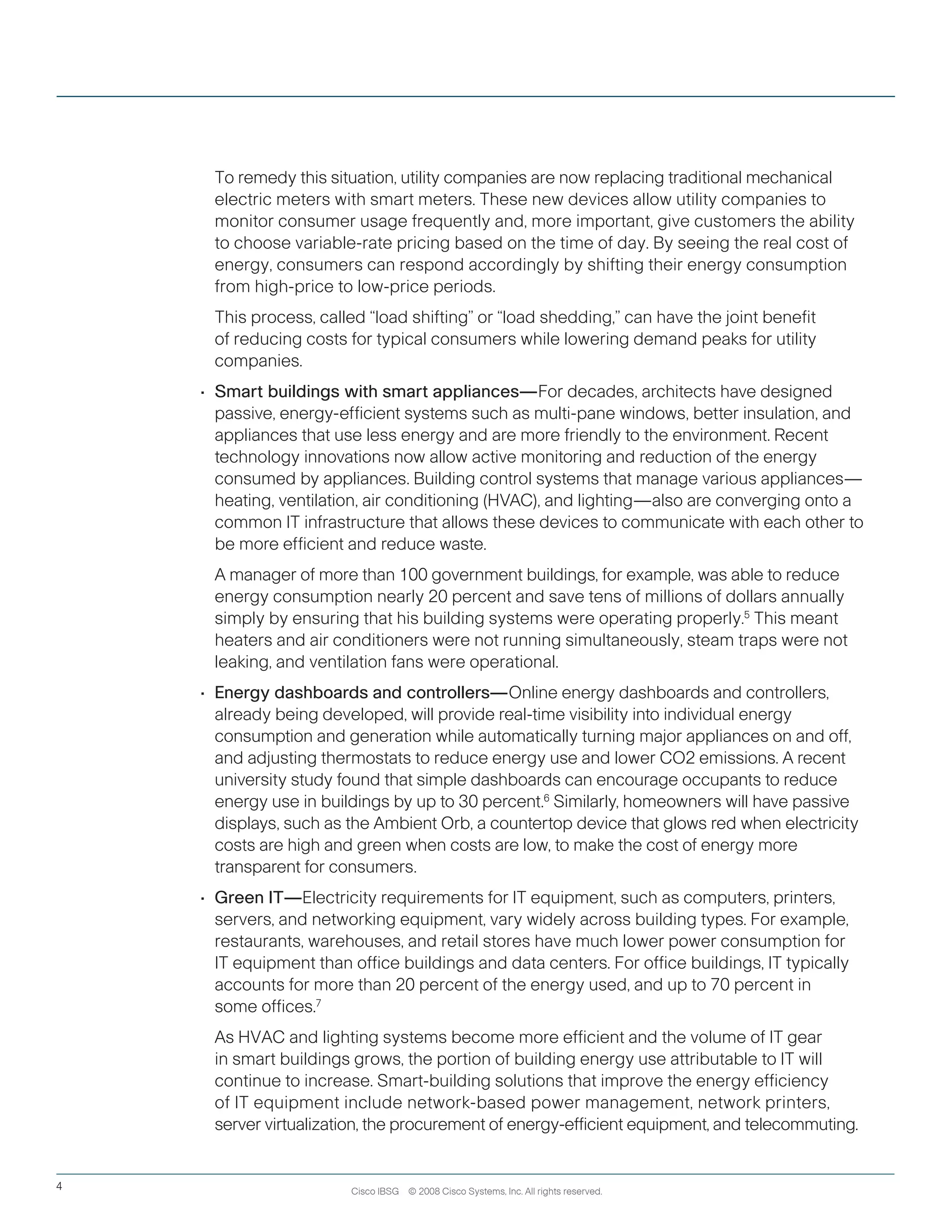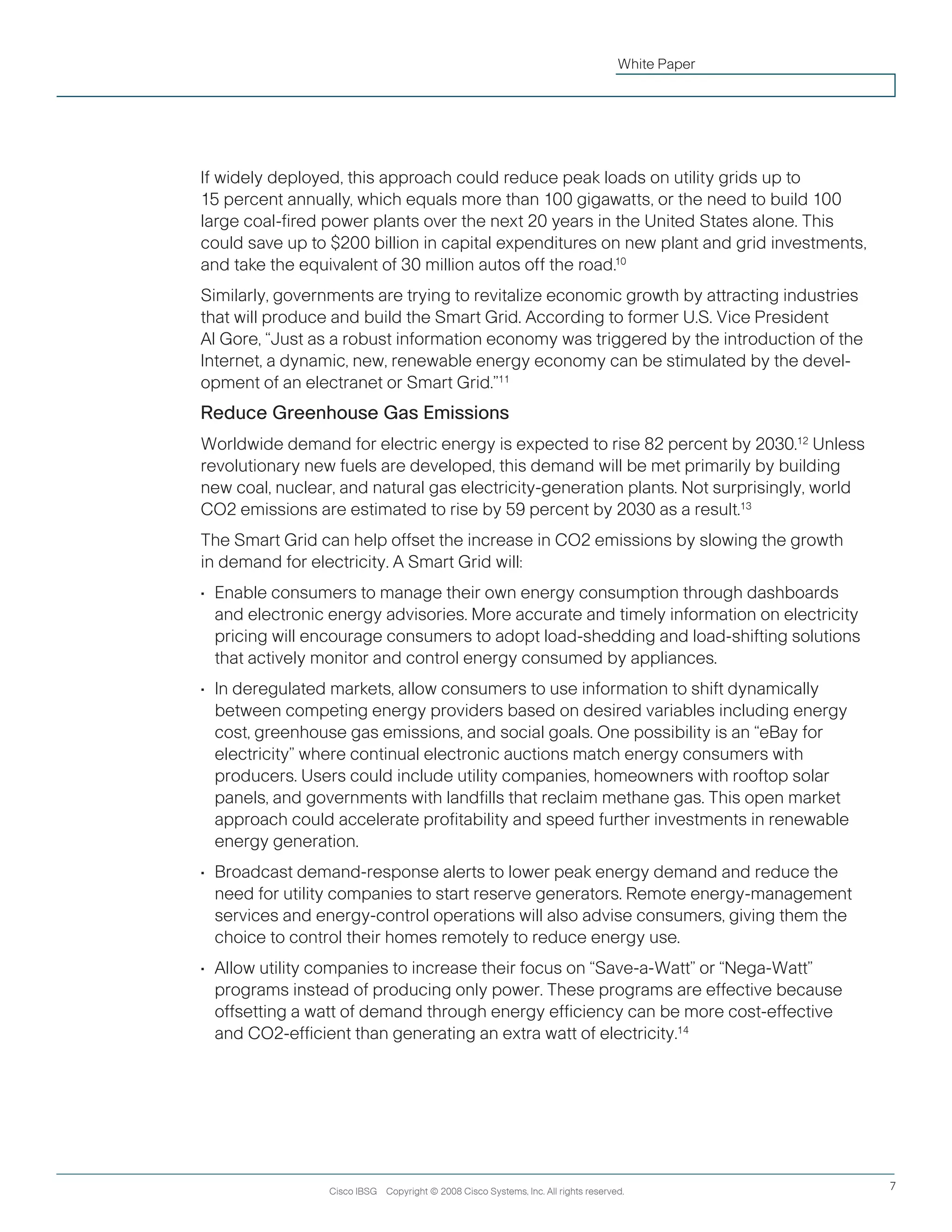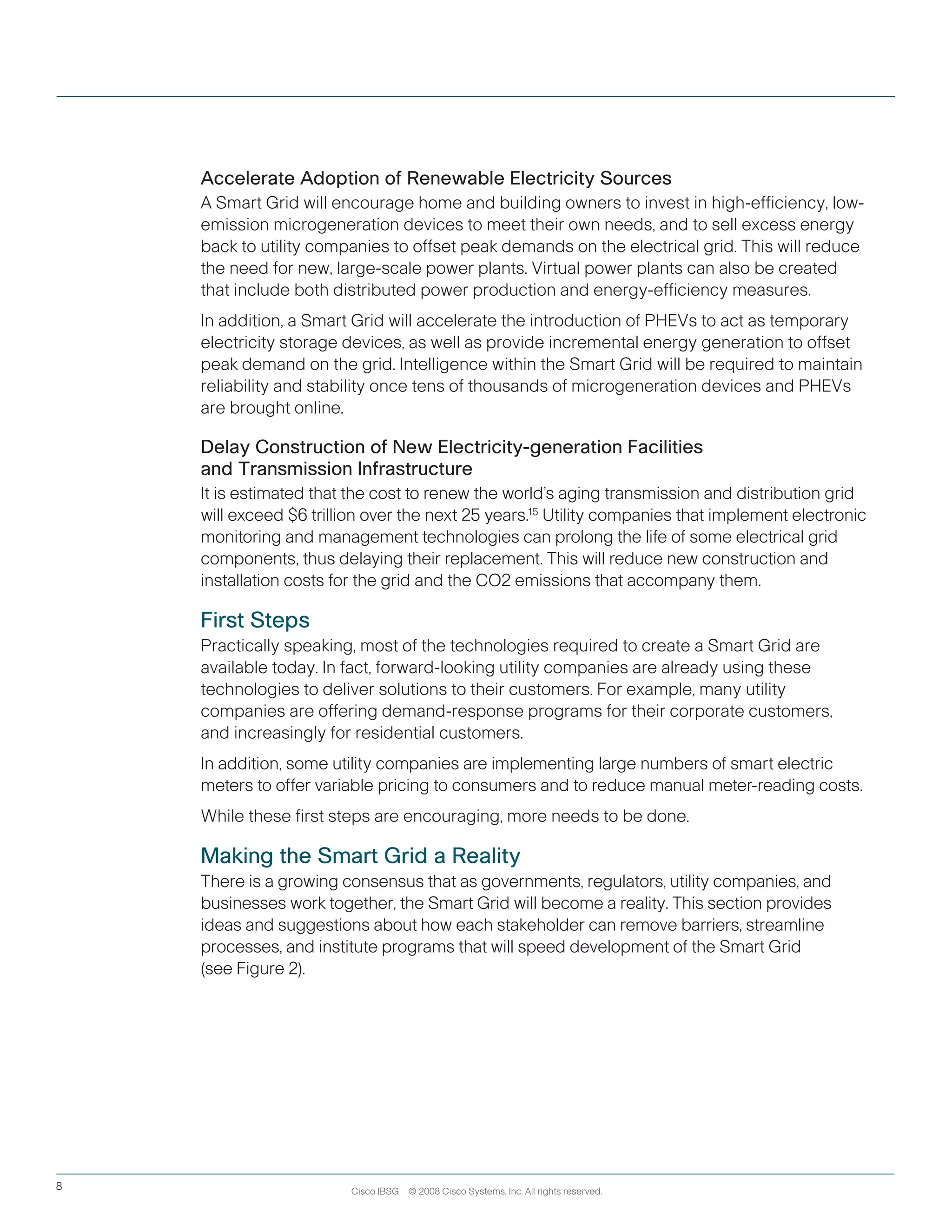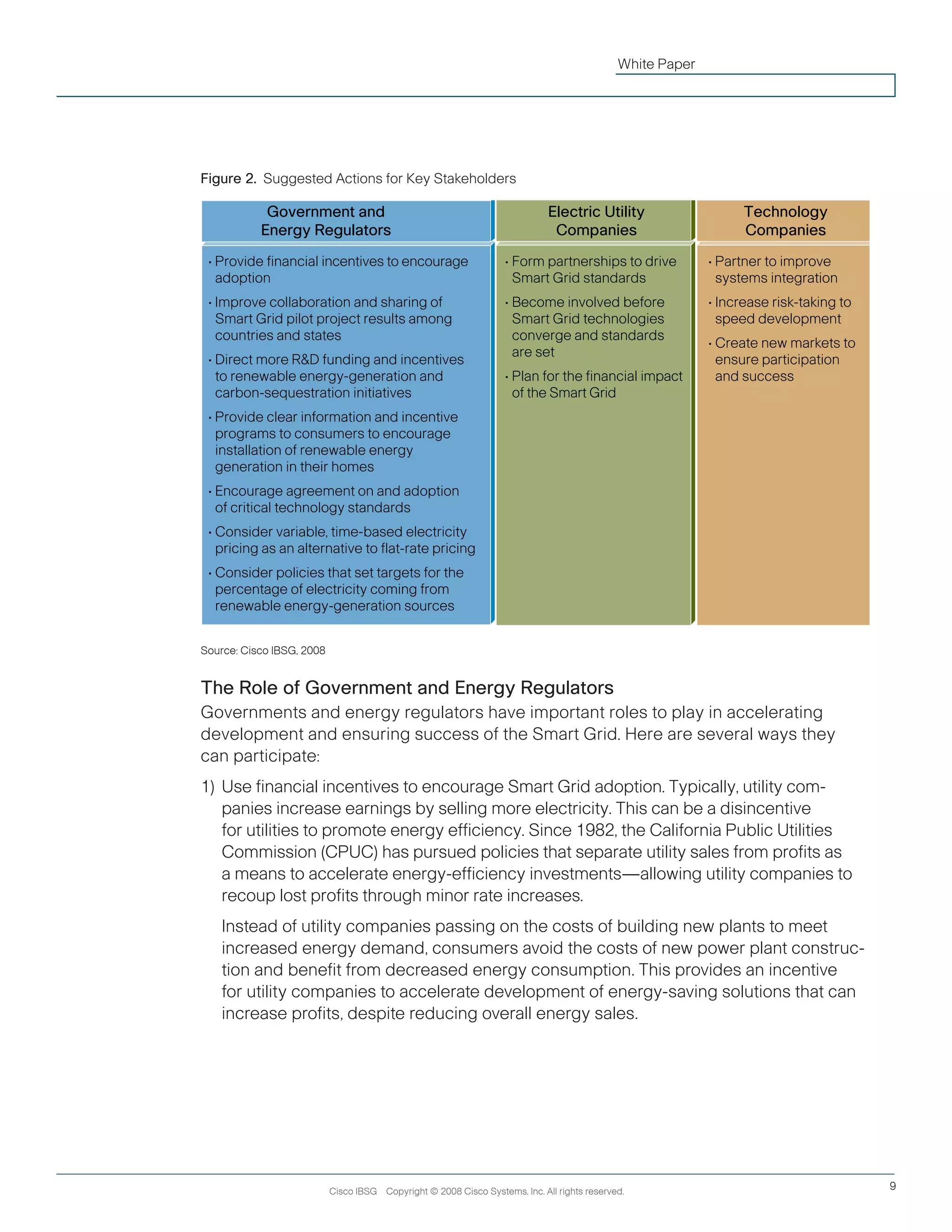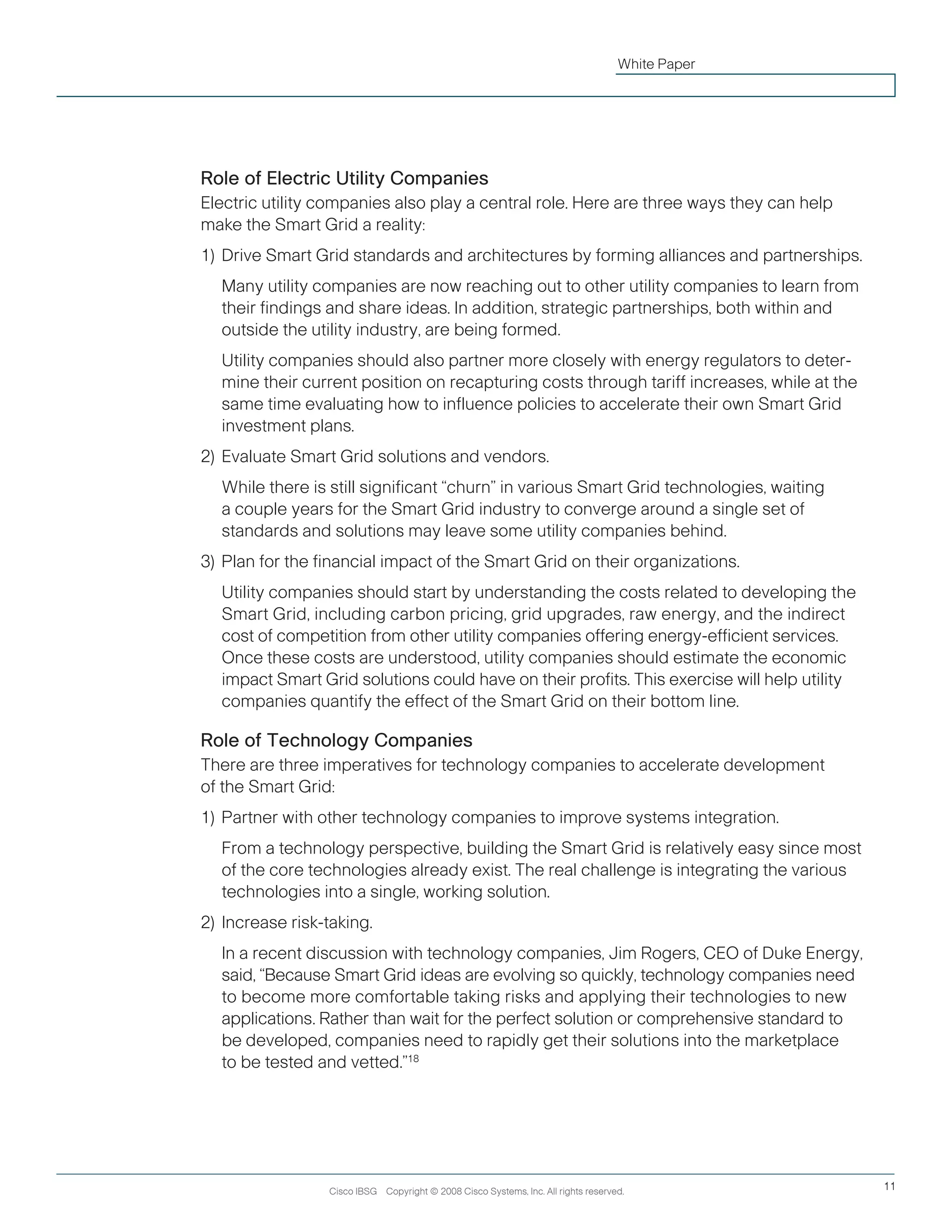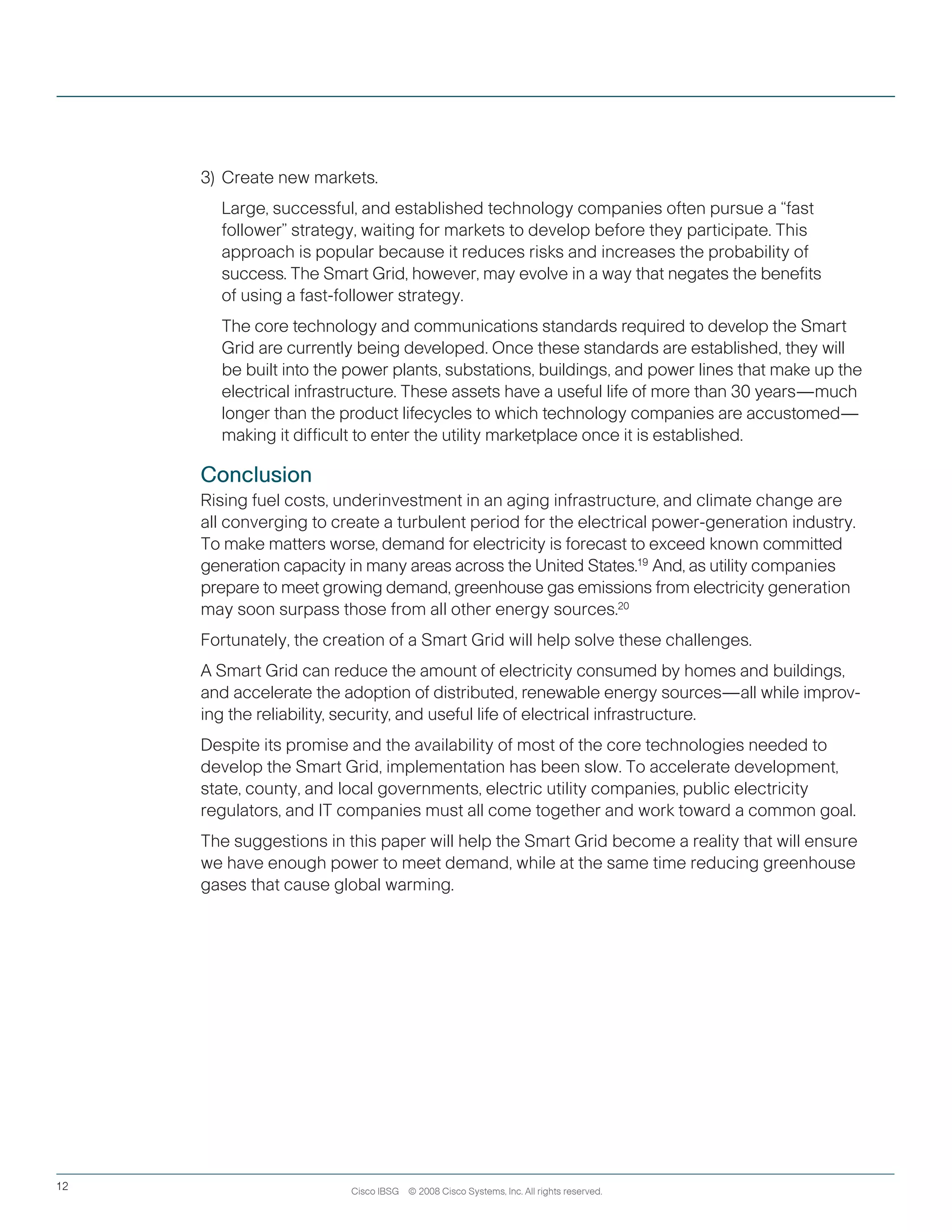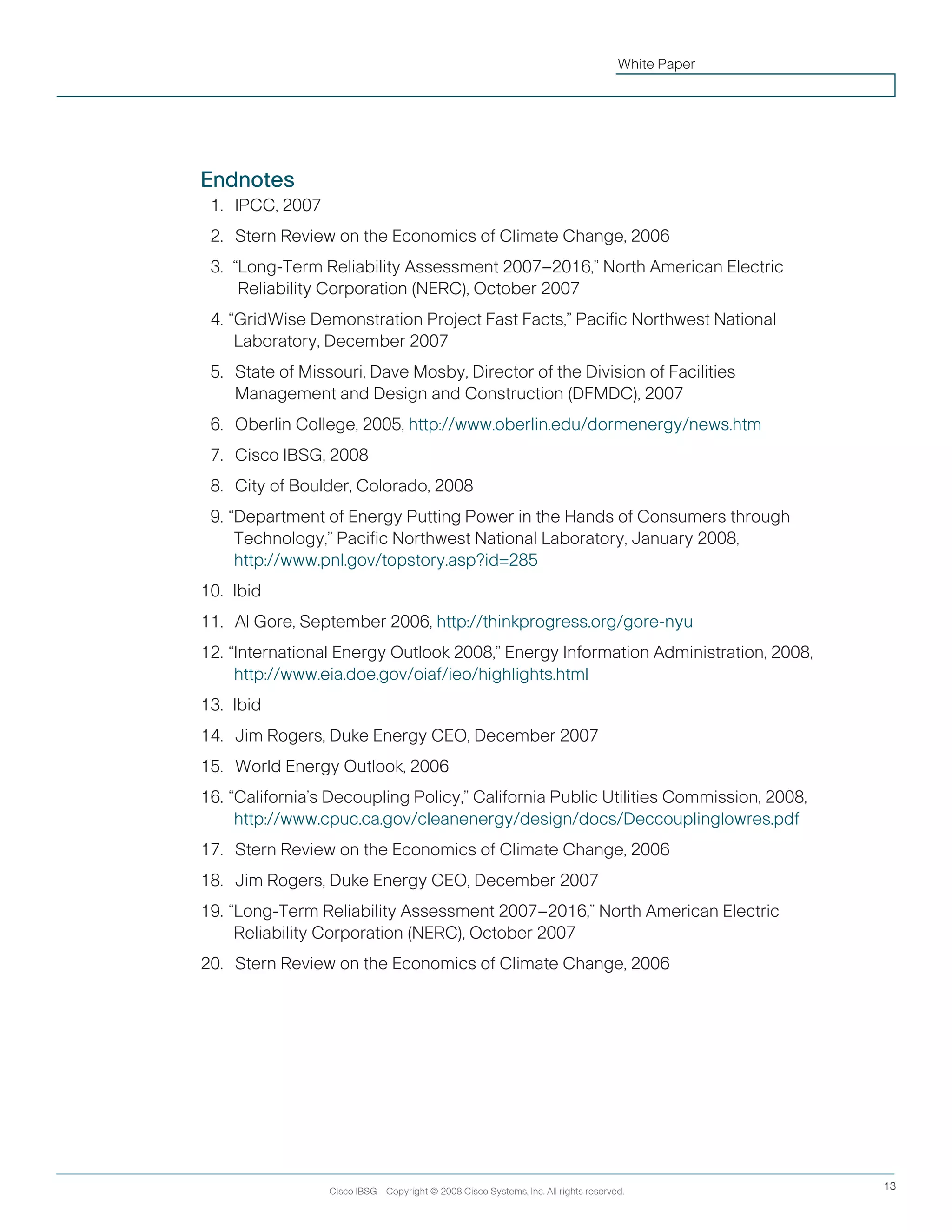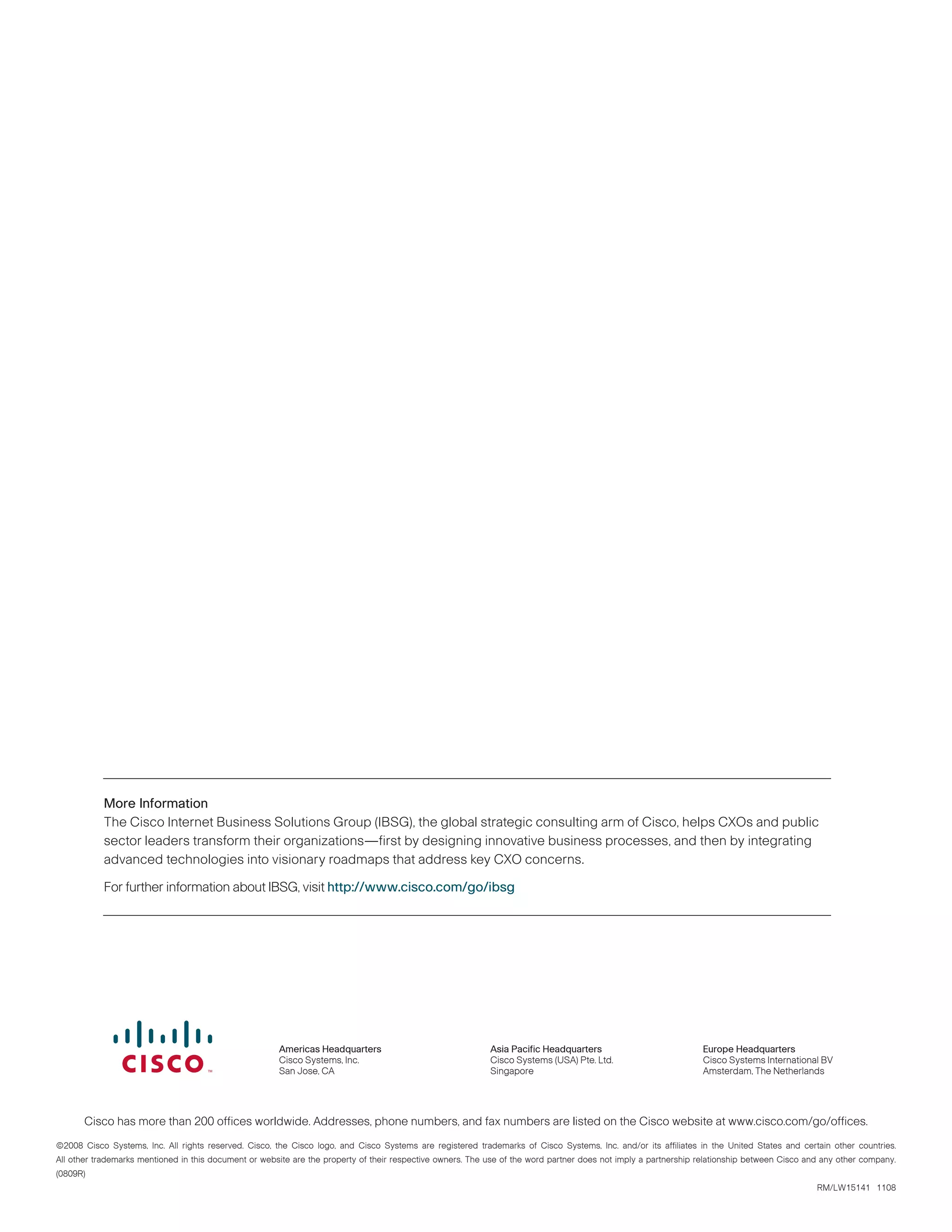The document discusses the need for a smart grid to modernize the aging electricity system. It describes how a smart grid would use information technology to improve efficiency by enabling demand management, distributed renewable energy generation, and transmission and distribution grid management. This would help meet future electricity demand, reduce costs, and lower greenhouse gas emissions by integrating renewable energy sources and allowing utilities and consumers to actively manage electricity usage and pricing. Key components of a smart grid discussed are smart meters, demand response programs, energy dashboards, and using data to optimize building energy management and appliance usage.
